Hello ladies and gentlemen, your pal Muldoon here with another exciting edition of "Meet The Crew." This column is for the folks who love movies and want to catch a glimpse behind the camera at the hardworking men and women who help create our favorite cinematic dreamscapes. Today's guest is one of the most respected creature designers out there, Shannon Shea. I'm incredibly excited and appreciative that he's given me/us a little piece of his time and have read through his answers a number of times myself simply as a fan. Shannon Shea has created some of the most memorable creatures out there, but his talents don't stop there - the guy's a machine of imagination and will soon be unleashing a film that he's written, is directing, and producing - called MR. BEEBEE. He's also got a book out, called I'M RUBBER, YOU'RE GLUE, that chronicles his experiences growing up in Louisiana and goes up until his time on PREDATOR. I'm not sure there's enough room on this page to fully go into Shannon's career, but if you've seen JURASSIC PARK, MONSTER SQUAD, PUMPKINHEAD, TERMINATOR 2, BATMAN RETURNS, or PREDATOR... then you absolutely have seen this man's incredible art... making the impossible possible. Yes, you can tell I'm a fan - the man brought dinosaurs to life in one of my favorite films, that's pretty damn hard to top. He's also loaded us up with some great candid shots from various films he's worked on, so if you were a fan of Quint's "Behind the Scenes Pic of the Day," you will absolutely appreciate what we've got here today. Okay, enough gushing from me - let's hear from a true artist all about being a Creature/VFX Supervisor.
SHANNON SHEA - Creature/VFX Supervisor
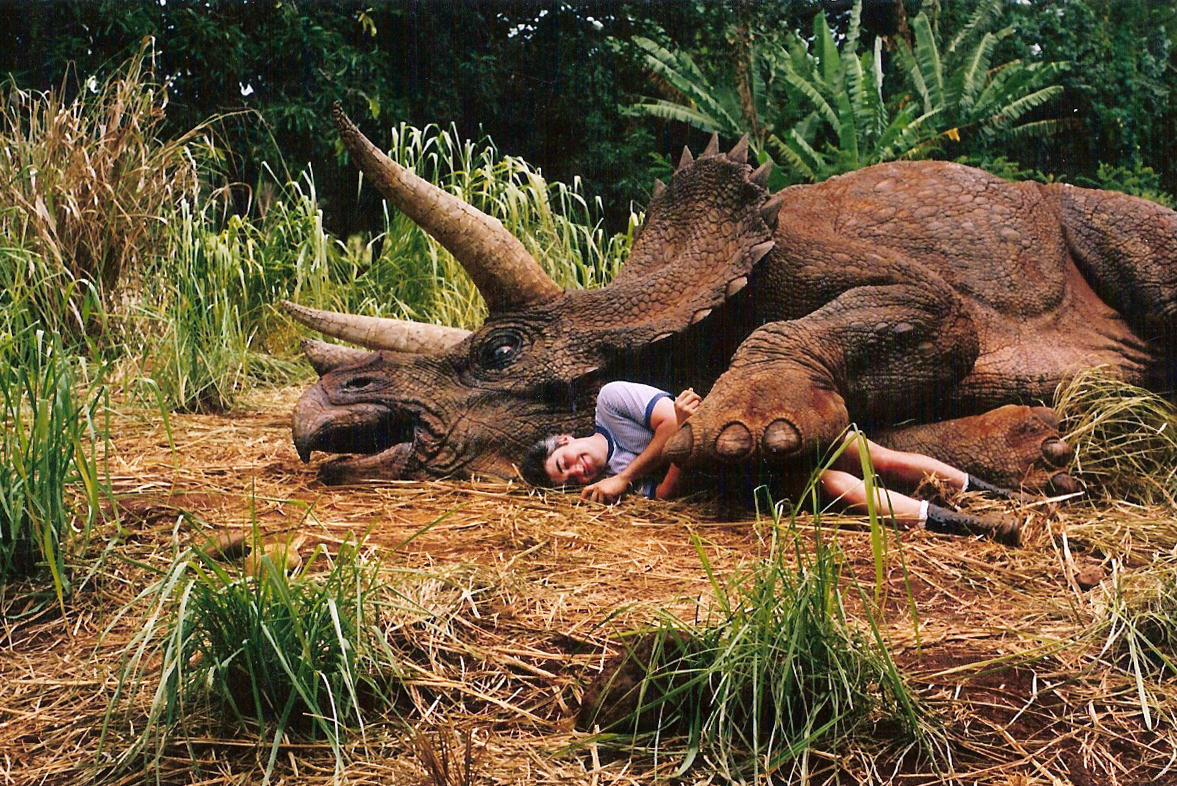
As a Creature/VFX Supervisor, what exactly do you do and when are you brought into a given project?
More often than not, I'm brought in at the very beginning. I'm often asked to read scripts and help decide how specific effects can be accomplished even before the film has a budget attached to it. I'm not an effects purist one way or the other, so now I ask this question of filmmakers: "How will this shot propel your STORY forward?" I'm not one for excess but do acknowledge that many films with weak or flimsy scripts rely on grandiose visuals to entertain. I'm not one of those VFX producers. I enjoy working with producers and directors who have big ideas and small pockets. It is much more challenging and far more interesting to be resourceful rather than just saying, "We'll do it digitally."
What do you consider to be the most enjoyable parts of your job? Is it cracking the nut of what a creature will look like or seeing it on set working, on the big screen, or is it something else?
It is the creative collaboration. Nothing makes me more enthusiastic than working with filmmakers who are interested enough in brainstorming ideas and having open discussions about what can be done rather than grousing about not having enough money or time to make something like AVATAR. James Cameron has earned the right to make visually excessive films but if you watch THE TERMINATOR, you realize he came to the table relying on his resourcefulness.
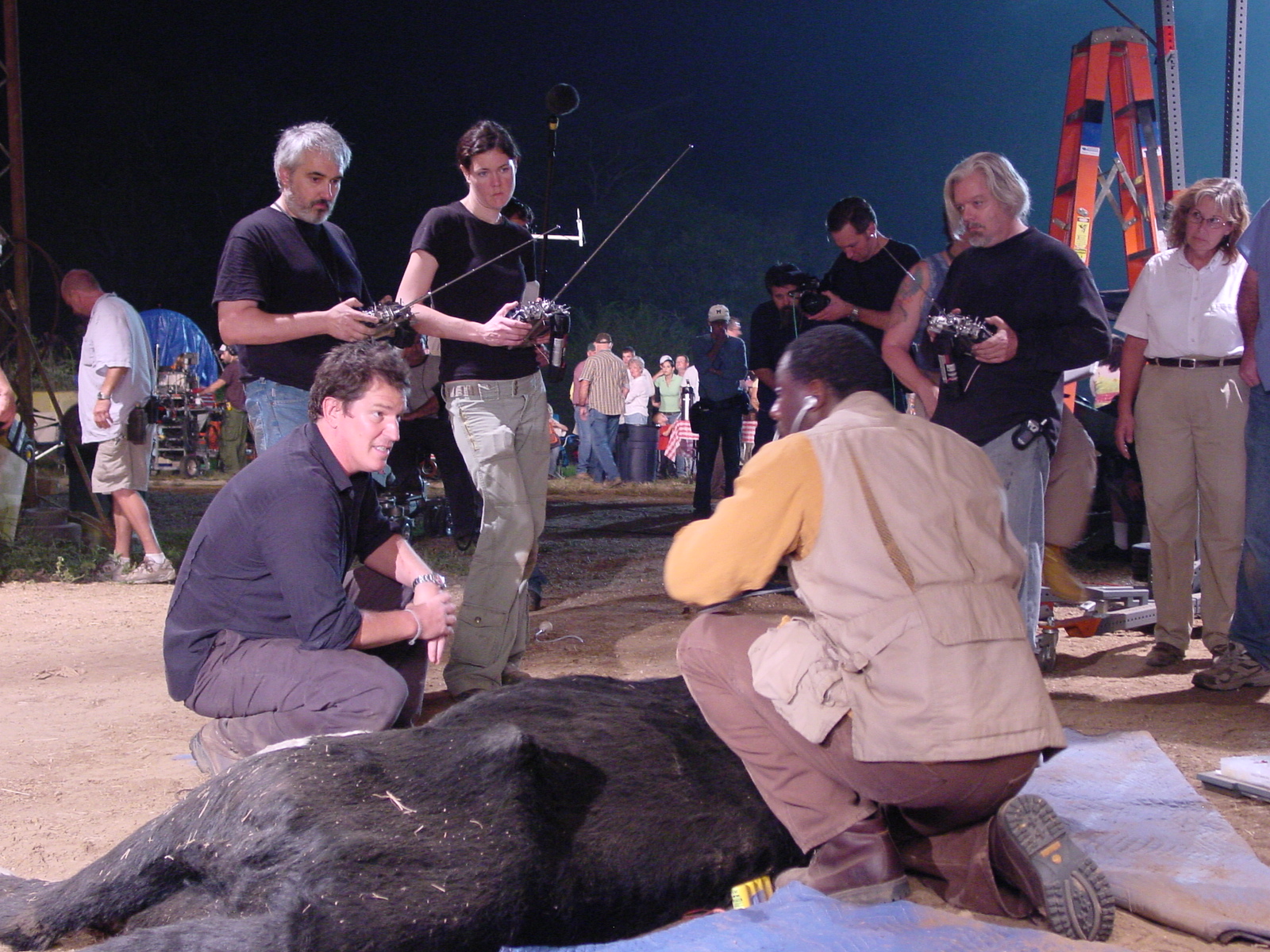
Roughly how many people do you have on your team for a given project? Clearly every job is different and demands different things, but roughly who do you work with directly when tasked with creating the unreal?
It is all project based. Lately, the crews have been much smaller. One to five artists working on set when needed. I've compared Special Makeup Effects companies to being like dinosaurs. In the 80s and 90s, the shops were big and expensive. Now, they have evolved into birds; they are smaller and more efficient. In essence, we've come full circle. We're kind of returning to the garages where we all started. It is exciting, actually.
How did you come to be a Creature/VFX Supervisor? I assume Harryhausen and O’Brien were massive influences on you as a child, but what path led you to being where you are now?
It is rather boring. I started in the lab, worked up to designer and sculptor and then to shop foreman than project supervisor. It has much to do with gaining practical experience and being able to balance both creative and practical responsibilities. I was enormously influenced by Willis O'Brien as a child, then I discovered Ray Harryhausen, then Jim Danforth, then Doug Trumbull, then John Dykstra, then Phil Tippett and Dennis Muran. I read and watched everything I could on these different artists and supervisors. I wanted to be like them. However, I realized that I didn't have the patience to become an animator when I went to college and wanted to break into stop-motion animation. But at that time, new artists like Rick Baker, Dick Smith, Stan Winston, Tom Burman, and Rob Bottin were literally stretching the boundaries of what could be accomplished with special makeup effects and I kind of heard the calling and changed my mind about a lot of things. I really loved, still love, executing an effect in front of a camera in real time.
It is extremely rewarding.
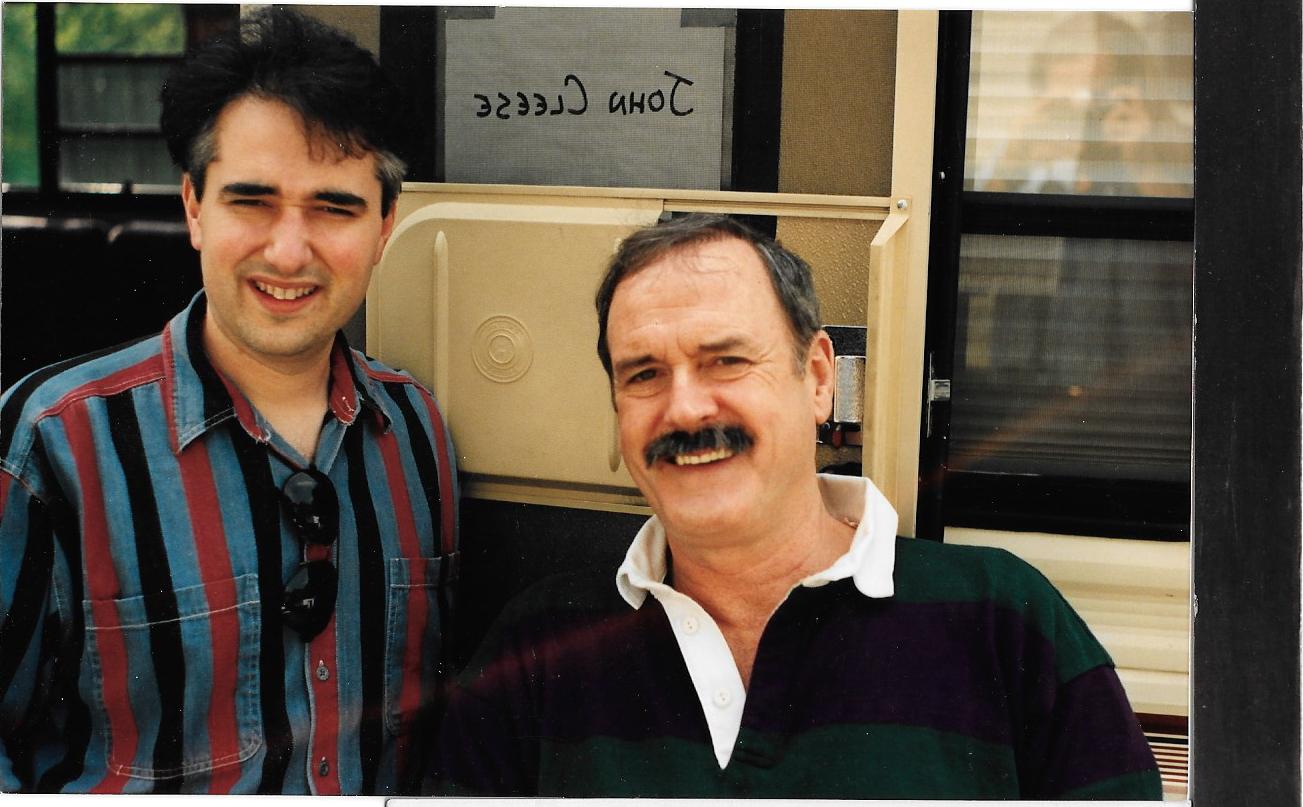
Was there anyone in particular who helped give you your first break?
I met two very talented artists while I was in college: Mark Shostrom and James Cummins. Mark had his own studio in South Pasadena while James ended up working for Rob Bottin as a sculptor on THE THING and then went on to key his own shows. They were both encouraging and taught me about the basics from sculpting to making fake teeth. Mark gave me my first job; James gave me my second job. However, the biggest shot in the arm was when Stan Winston invited me to join his core crew after I co-supervised PREDATOR with Matt Rose and Steve Wang.
You’ve created memorable creatures from countless films, but in your opinion, which of those films are you the most proud of and why? (Clearly I’m a tad biased here as you worked on JURASSIC PARK…) Have you ever been working on a project and felt “This film will be a game changer”?
I knew that the Queen Alien would be a game-changer, but I did little more than work in the mold shops both at Stan Winston's and Doug Beswicks. I don't believe that any of us thought that PREDATOR would have influenced generations of fans but I'm happy that it did. But, the only time I ever saw James Cameron say "Wow" was when he saw the T-Rex mechanics demonstrated in Stan's studio (before it looked like a Tyrannosaurus). We knew we were making history.
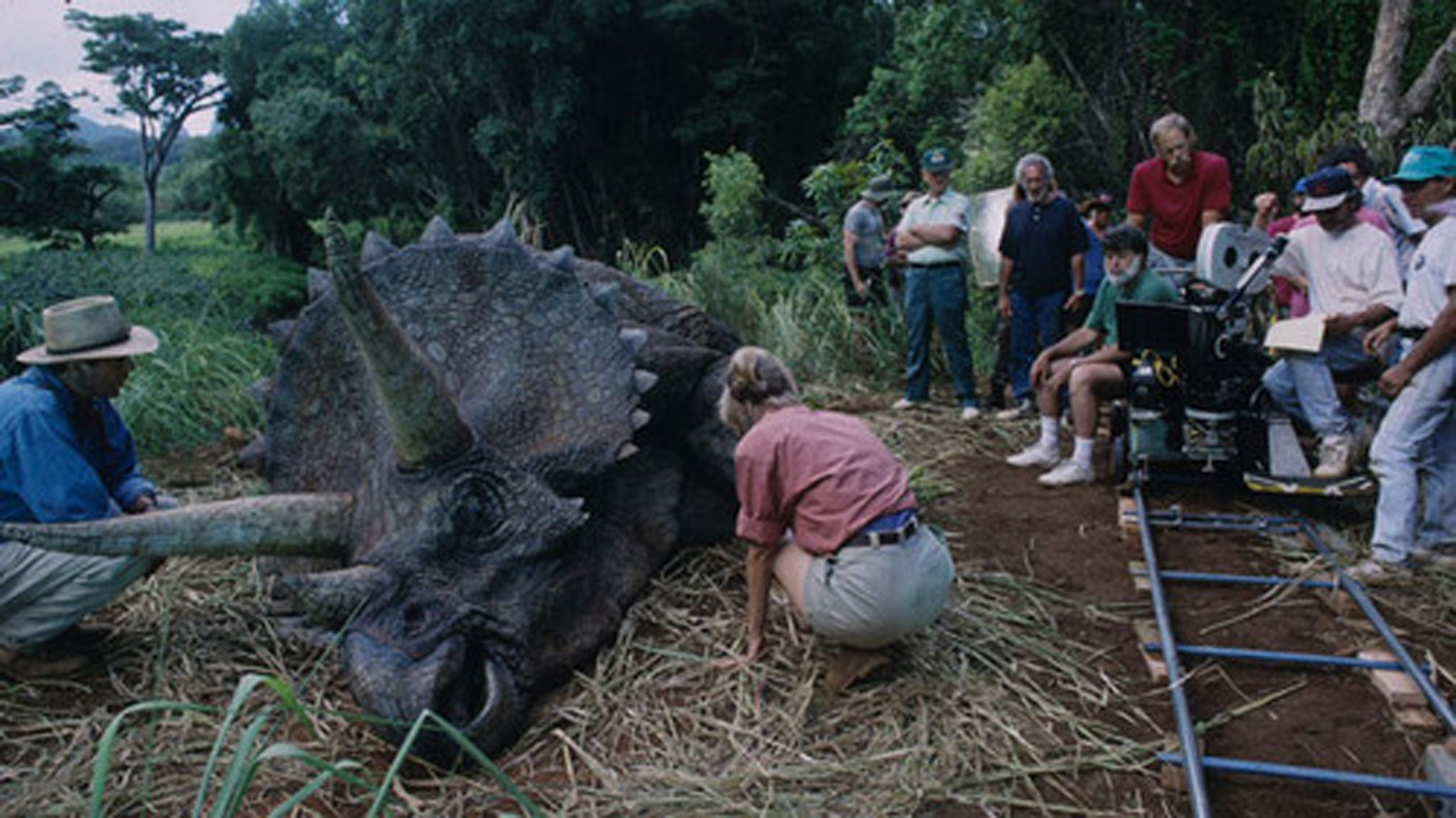
Is there a shot/sequence/set that you can point to and say, “It’s that way because I was there and had it of been anyone else, it would have been different.” Not necessarily good or bad, but possibly something a lot of us movie fans would have seen and can find a little more appreciation out of. Clearly you’re an artist and part of hiring artists is to allow them the creative control they need in order to take a design to the next level – for you, what are some of the designs you’re most proud of?
I'm really proud of Sarah Connor's nightmare from TERMINATOR 2. I worked pretty hard to figure out those ash bodies. I wasn't alone in building them, but I did most of the tests and research on how the effect would be accomplished. At one point, I was sent to a crematorium with a fake head made of a highly flammable material called "reduplicating material" to see if it could be ignited all over, simultaneously. There was a dead body, under a sheet in the same room while the head burned. It was a disturbing experience.
With practically any film, the demand to work with other departments is crucial to the success of a given film. What type of things do you look for when working with other departments? Or, what are some key questions you typically need addressed in order to pull off some of your more elaborate gags and make sure everything works cohesively?
Wardrobe departments are wary of excessive blood effects! Whenever I'm at a script read-through and we get to a throat-cutting scene, I ask the question: "How many shirts will you have on set that day?" and then it launches into a big discussion that begins to encroach into a budgetary discussion. There are many times when a Prop Department supervisor will ask our department for help with specific props (like the exploding frogs from Ang Lee's HULK). The best crews are the ones where there is a strong team feeling. I've felt that many times, but working in Austin with Robert Rodriguez and his long-time associates like Steve Joyner and Caylah Eddleblute made me feel less like a collaborator and more like family. I miss that.
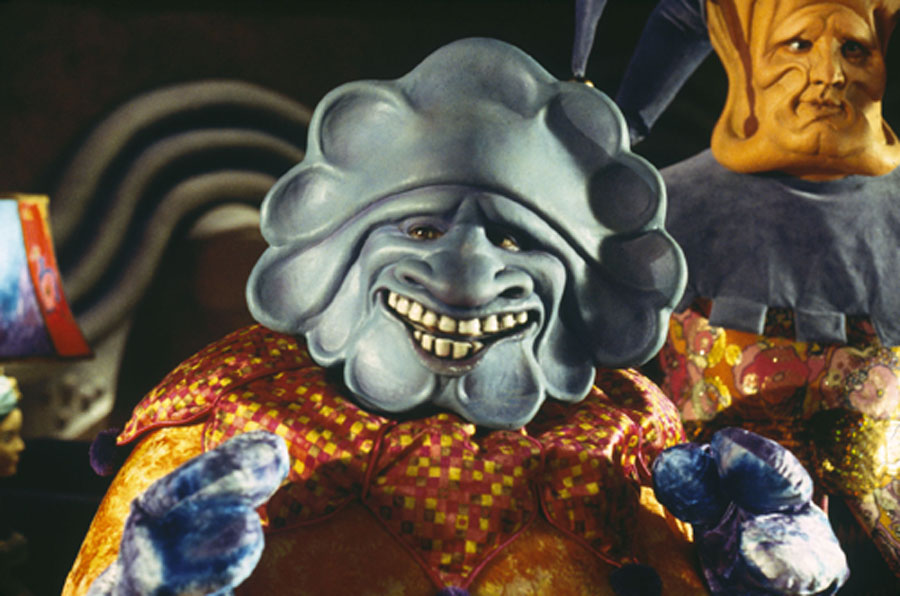
As far as directors go, you’ve worked with the biggest and best out there on some of the biggest movies of all time. By chance, do you have any interesting stories about any in particular? Selfishly, do you have any stories from JURASSIC PARK and working with Spielberg on creating the illusion of living dinosaurs?
The best JURASSIC PARK moment I can report about Mr. Spielberg was when actress, Fay Wray (from the original KING KONG) visited set. Fay was married to Stan Winston's cousin, so we on Stan's crew had met her a couple of times at the shop, but when Steven was introduced to her, he became, what I think makes him a fantastic director, and that is a fan. His respect and interest for her was evident. I recall that we stopped shooting so he could sit on set with her (in the shadow of the T-Rex animatronic) and they spoke for a long time, just the two of them. It was very cool indeed.
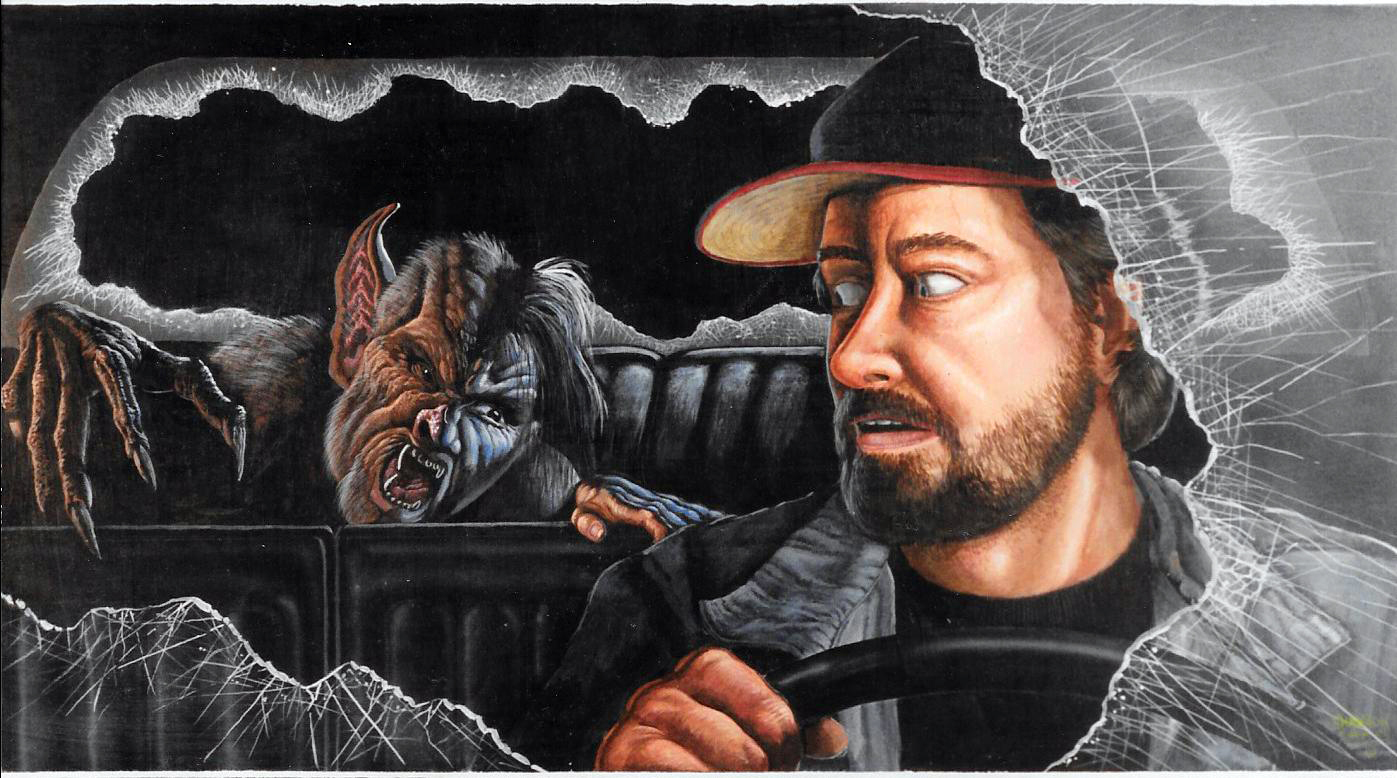
Unless I’m mistaken, you’re currently working on your first feature as a director on MR. BEEBEE – what lessons have you learned from other directors that you’ve found to be invaluable on your first venture into feature film directing?
I've learned the following things from the following directors:
From Steven Spielberg - Be prepared! Don't be afraid to come to set with a plan, a shot list, and trusting in your crew to do their jobs.
From Sam Raimi - Respect the position. Directing is an honor and you have a responsibility to your cast and crew to come to set ready to work, ready to be tireless and enthusiastic and open to the suggestions from your crew.
From Robert Rodriguez - Think like an editor. Shoot what you need to tell your story and move on! Work fast, keep the energy alive and know that magic isn't something that is easily maintained after 17 takes. Get what you need and move on!
From James Cameron - Think unconventionally. Tell moving stories about real people in fantastic situations. We all share the same human emotions and responses. Put those "real" characters into stories that challenge them to go beyond their comfort zones and rise to be the best they can be. And....a little melodrama never hurt anyone.
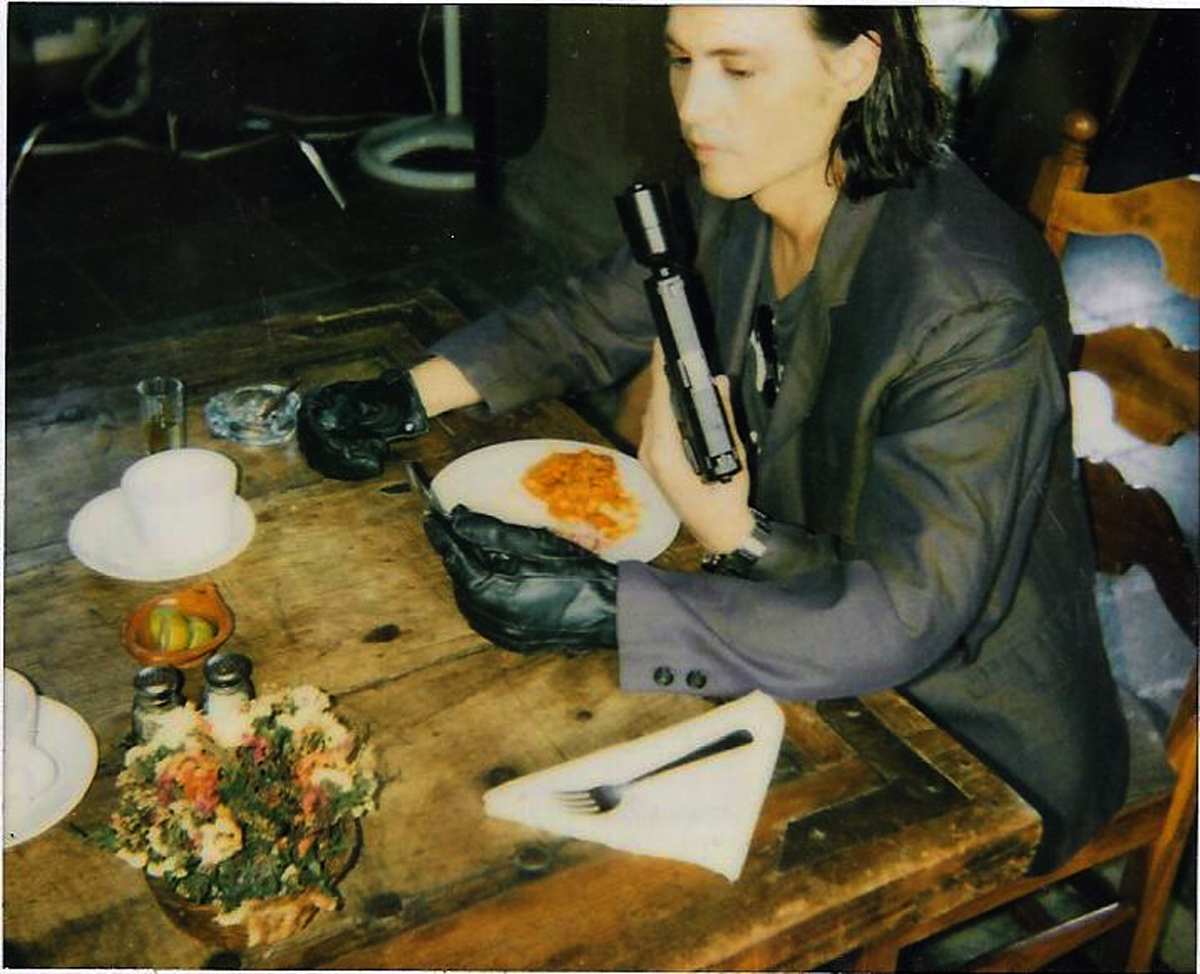
Can you share any stories from the trenches? Any specific moments in your career that have stuck with you ever since? For instance, operating an animatronic in the freezing rain or applying makeup in the heat when an actor can’t help but sweat profusely.
There are far too many! That's one of the things I actually enjoy about practical effects. Sometimes things go wrong and it becomes another scar, not unlike the character Quint from JAWS. I've put many of the best of these experiences into my new book series, "I'm Rubber, You're Glue." At the risk of sounding like a commercial, the e-books are memoirs - Vol. 1 starts in childhood and goes to PREDATOR, Vol 2 starts with PUMPKINHEAD and ends with JURASSIC PARK, Vol. 3 starts with HERCULES/XENA and ends with MEN IN BLACK III. You'll read about it all: the horrors, the successes, basically the bumpy road of creature effects that started in the 1980s. I offered the unedited manuscript to fans during the 2014 Holiday season and it was received very well, but the official version goes on sale at the end of February 2015.
Okay, since you've all been good boys and girls, I'll offer a true tale of set horror:
In the mid-nineties, I moved my family from Los Angeles to North Carolina. The area was so beautiful and just about to explode with commercial development, that I decided to make plans to open a coffee house/art gallery there. In the midst of my planning I was contacted and offered to do a job that shot in Italy - a horror film entitled The 18th Angel. The creature puppets were being built in Los Angeles, and I was to fly to Italy and join the crew to puppeteer mutant animals.
No script. No photos of the puppets. All just trust.
I arrived in Roma, met up with the crew and the next day was on set which was in a location close to the Stadio Olympico. The puppet was supposed to be a little white mouse gone wrong, and for what ever reason (lack of money, lack of time) the puppet didn't look all that great. We shot the scene and all returned back to the United States with the understanding that we would return to shoot the rest of the animals later in the schedule.
A couple of weeks went by, and I got on a plane and returned to Roma. Upon my arrival, I was almost, literally dragged to a screening room and shown the footage of the mutant mouse. The producers were agitated and put me on the spot. "Why do the creatures look like this?" the demanded, "How can they look so artificial?"
I told them: "This is your fault." They seemed shocked at my response. I went on, "Let me paint a scenario for you: You probably sent your script out to a bunch of companies including big names like Stan Winston, received a bunch of competing bids, and went with the absolute lowest bid, right?"
There was no answer. I continued -
"This company took the job and adjusted their delivery based on what you were willing to pay and the time you gave them. This was the best they could do. The best. Given more time and money, you would have something you would be happy to film, but you cheaped out and now have this."
There was no come back. I was asked to stay and continue to do my best to make sure the rest of the animals looked better. We did our best, our absolute best but there was just no polishing the turd. A couple of the puppets looked pretty good, but by and large...eek!
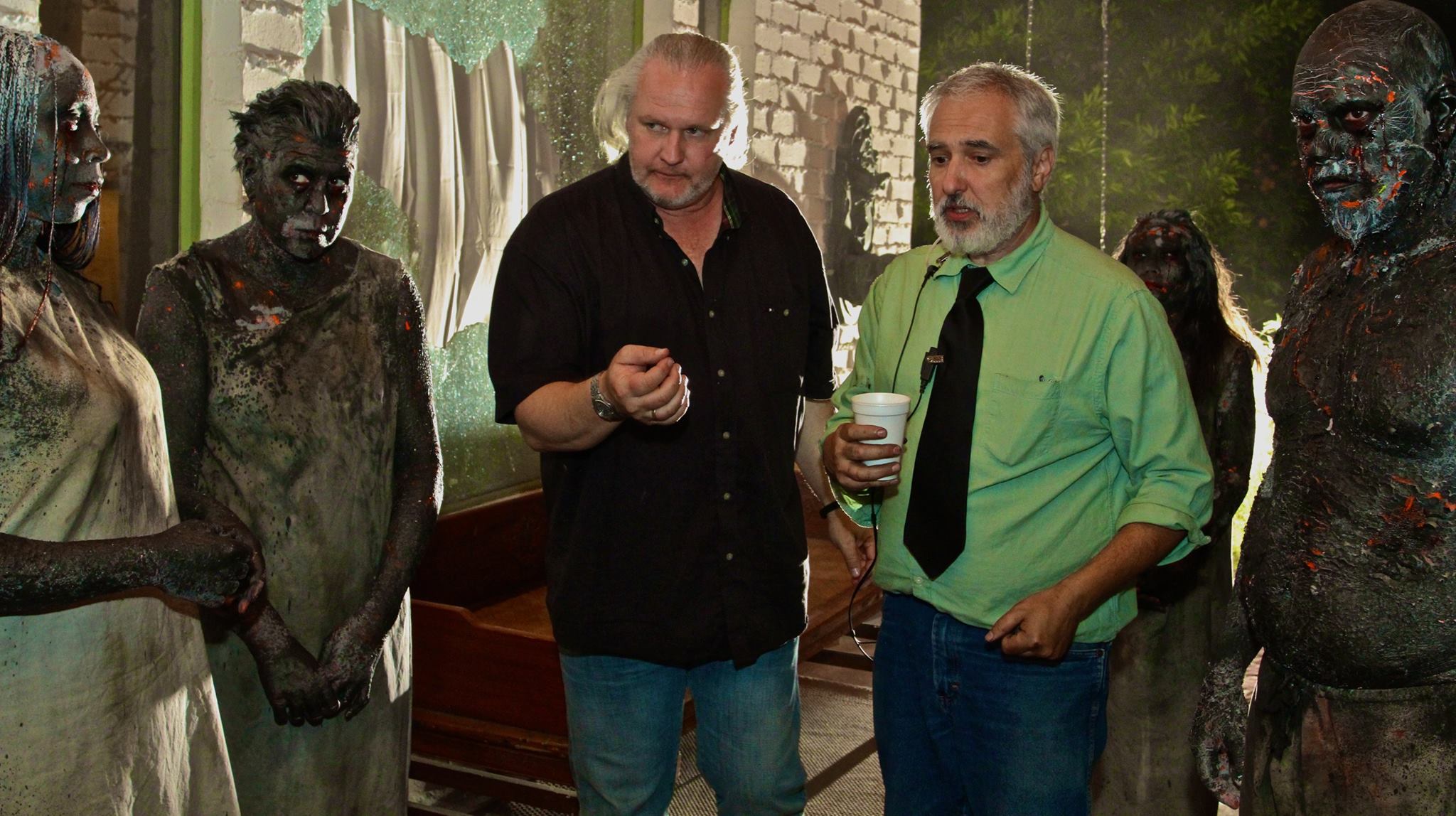
If by chance you weren’t in film, what do you think you’d be doing with your life?
I would do what I do now between gigs - I'd teach. I'm an instructor both at the Stan Winston School of Character Arts and Cinema Makeup School in Los Angeles. I've discovered how much I love teaching young artists the techniques I've learned for the last 30 years. True, had I not gone into effects, I think I would have tried my hand at film making as a young man, but looking back at the decisions I made, I don't think I had much of a choice in the matter. Whatever force was guiding me, it did so with such clarity and conviction that within two years of coming from Louisiana to Los Angeles, I had managed to earn a spot as a "Lifer" with Stan Winston studios. I was never offered much of a choice.
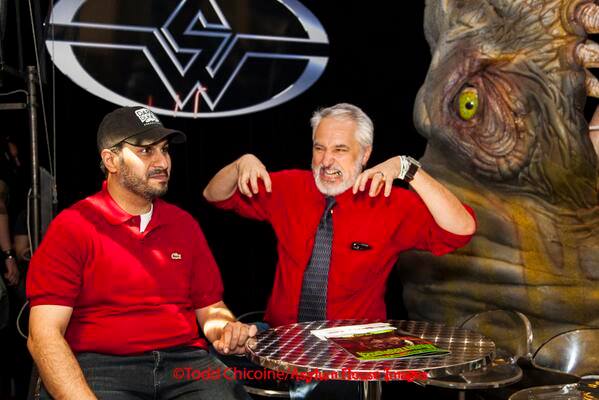
Lastly, do you have any advice for potential filmmakers in the AICN audience? It could be for the folks out there who want to get into prosthetic makeup application, creature sculpting, directing, or any words of wisdom at all!
Learn to tell your stories! And once you have your story, trust it. Stand behind it. Don't flinch! Have confidence! I say that because far too often I meet young directors who have fairly good scripts, good concepts, good characters and they begin getting caught up in "the language of cinema." Before long, the camera is flying around virtual space flying up people's noses and out of their butts not because it adds to the story but because "It is a cool shot." My challenge to any young filmmaker is to do this: Think of a situation where two people are sitting in a sparsely furnished room, talking. Not fighting or torturing each other. Just talking. If you can write a script where that is the "action" and your audience is riveted to the screen, then that is good story telling!! And don't say it can't be done; David Mamet would argue with you.
Ladies and gentlemen, Mr. Shannon Shea. I'd love to take just a moment and genuinely thank Shannon Shea for his time. His insight into some of Hollywood's biggest movies is just incredible... Again, if you're interested in reading more about him, I believe his e-book will be released online in the next few weeks. Be sure to hit up the book's Facebook page to keep tabs on when you might get a chance to check it out and follow him on Twitter with @ShannonShea. I'll see you fine folks a week from now, but in the mean time - be sure to check out past MEET THE CREW columns and hopefully you might just get a unique perspective you're not used to.
If you work in production, in any aspect (truly!) and would be cool enough to give us film fans a glimpse into the innerworkings of your world, please shoot me an email at Mike@aintitcool with the subject line: "MTC - (Your Name) - (Your Position)"
This column is new and while I'd love it to be an "every Sunday" kind of thing, I have to wait and see first if it should only remain a "first Sunday of every month" kind of thing. Hopefully you ladies and gents got a kick out of today's chat. I'll see you fine folks later. (Now go out and make something awesome!) Be sure to check out past articles:
Robby Baumgartner - Director of Photography
Thomas S. Hammock - Production Designer
- Mike McCutchen
"Muldoon"
Mike@aintitcool.com
![]()
